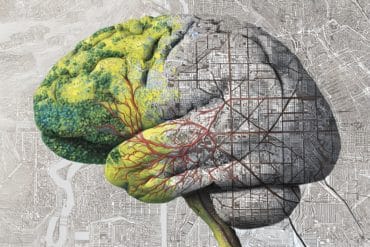Summary: Researchers uncovered a pivotal detail that could revolutionize schizophrenia treatment. Contrary to longstanding belief, antipsychotic drugs that mitigate overactive dopamine, a hallmark of schizophrenia, interact primarily with a different type of neuron than originally assumed.
This unexpected discovery challenges conventional wisdom about psychosis and may pave the way for more effective, side-effect-minimized treatments. It provides an unprecedented opportunity to reassess and improve antipsychotic drug development.
Key Facts:
- The study found that antipsychotic drugs interact predominantly with neurons that have D1 dopamine receptors, contradicting the traditional belief that these drugs act mainly on D2 receptor-expressing neurons.
- This groundbreaking finding could transform the understanding of the neural basis for psychosis and open new avenues for drug development.
- Current antipsychotic treatments, which are ineffective for over 30% of patients with treatment-resistant schizophrenia, often carry adverse side effects, underscoring the urgent need for improved treatments.
Source: Northwestern University
Antipsychotic drugs—used to treat the millions of people in the U.S. with schizophrenia—have lots of unpleasant side effects. The drugs also aren’t effective for many people. There is an urgent need to develop better drugs.
A new finding from Northwestern Medicine scientists provides a new avenue to develop more effective drugs to treat the debilitating symptoms of schizophrenia.
Traditionally, researchers have screened antipsychotic drug candidates by evaluating their effects on mouse behavior, but the approach used by a Northwestern lab outperformed these traditional approaches in terms of predicting efficacy in patients.
The study discovered that antipsychotic drugs—which inhibit the overactive dopamine causing the symptoms of schizophrenia—interact with a completely different neuron than scientists originally believed.
“This is a landmark finding that completely revises our understanding of the neural basis for psychosis and charts a new path for developing new treatments for it,” said lead investigator Jones Parker, assistant professor of neuroscience at Northwestern University Feinberg School of Medicine.
” It opens new options to develop drugs that have fewer adverse side effects than the current ones.”
The study was recentlu published in Nature Neuroscience.
Individuals with schizophrenia have increased levels of dopamine in a region of the brain called the striatum. This region has two primary types of specialized brain cells called neurons: those that have D1 dopamine receptors and those that have D2 dopamine receptors.
Receptors on neurons are like locks waiting for the key that turns them on. Picture two populations of neurons, one that expresses locks called D1 receptors and the other called D2 receptors. Dopamine is a key for both receptors, but antipsychotics only block the D2 receptor locks.
Therefore, experts have assumed these drugs preferentially act on neurons that express the D2 receptor locks. But, in fact, it was the other brain cells—the neighboring ones in the striatum with D1 receptors—that responded to antipsychotic drugs in a manner that predicted clinical effect.
“The dogma has been that antipsychotic drugs preferentially affect striatal neurons that express D2 dopamine receptors,” Parker said.
“However, when our team tested this idea, we found that how a drug affects the activity of D2 receptor-expressing striatal neurons has little bearing on whether it is antipsychotic in humans. Instead, a drug’s effect on the other striatal neuron type, the one that expresses D1 dopamine receptors, is more predictive of whether they actually work.”
Schizophrenia is a debilitating brain disorder that affects approximately 1 in 100 people (more than 2.5 million people in the U.S.). While existing antipsychotics are effective for the hallmark symptoms of schizophrenia such as hallucinations and delusions, they are ineffective for the other symptoms of schizophrenia such as deficits in cognitive and social function.
Moreover, current antipsychotics are completely ineffective in more than 30% of patients with treatment-resistant schizophrenia (more than 750,000 people in the U.S.). The use of these drugs also is limited by their adverse effects, including tardive dyskinesia (uncontrollable body movements) and parkinsonism (rigidity, tremors and slowness of movement).
The new study for the first time determined how antipsychotic drugs modulate the region of the brain thought to cause psychosis in living animals.
“Our study exposed our lack of understanding for how these drugs work and uncovered new therapeutic strategies for developing more effective antipsychotics,” Parker said.
Other Northwestern authors include first author Seongsik Yun, Ben Yang, Justin Anair, Madison Martin, Stefan Fleps, Arin Pamukcu, Nai-Hsing Yeh, Anis Contractor and Ann Kennedy.
About this psychopharmacology research news
Author: Marla Paul
Source: Northwestern University
Contact: Marla Paul – Northwestern University
Image: The image is credited to Neuroscience News
Original Research: Closed access.
“Antipsychotic drug efficacy correlates with the modulation of D1 rather than D2 receptor-expressing striatal projection neurons” by Seongsik Yun et al. Nature Neuroscience
Abstract
Antipsychotic drug efficacy correlates with the modulation of D1 rather than D2 receptor-expressing striatal projection neurons
Elevated dopamine transmission in psychosis is assumed to unbalance striatal output through D1- and D2-receptor-expressing spiny-projection neurons (SPNs). Antipsychotic drugs are thought to re-balance this output by blocking D2 receptors (D2Rs).
In this study, we found that amphetamine-driven dopamine release unbalanced D1-SPN and D2-SPN Ca2+ activity in mice, but that antipsychotic efficacy was associated with the reversal of abnormal D1-SPN, rather than D2-SPN, dynamics, even for drugs that are D2R selective or lacking any dopamine receptor affinity. By contrast, a clinically ineffective drug normalized D2-SPN dynamics but exacerbated D1-SPN dynamics under hyperdopaminergic conditions.
Consistent with antipsychotic effect, selective D1-SPN inhibition attenuated amphetamine-driven changes in locomotion, sensorimotor gating and hallucination-like perception.
Notably, antipsychotic efficacy correlated with the selective inhibition of D1-SPNs only under hyperdopaminergic conditions—a dopamine-state-dependence exhibited by D1R partial agonism but not non-antipsychotic D1R antagonists.
Our findings provide new insights into antipsychotic drug mechanism and reveal an important role for D1-SPN modulation.







